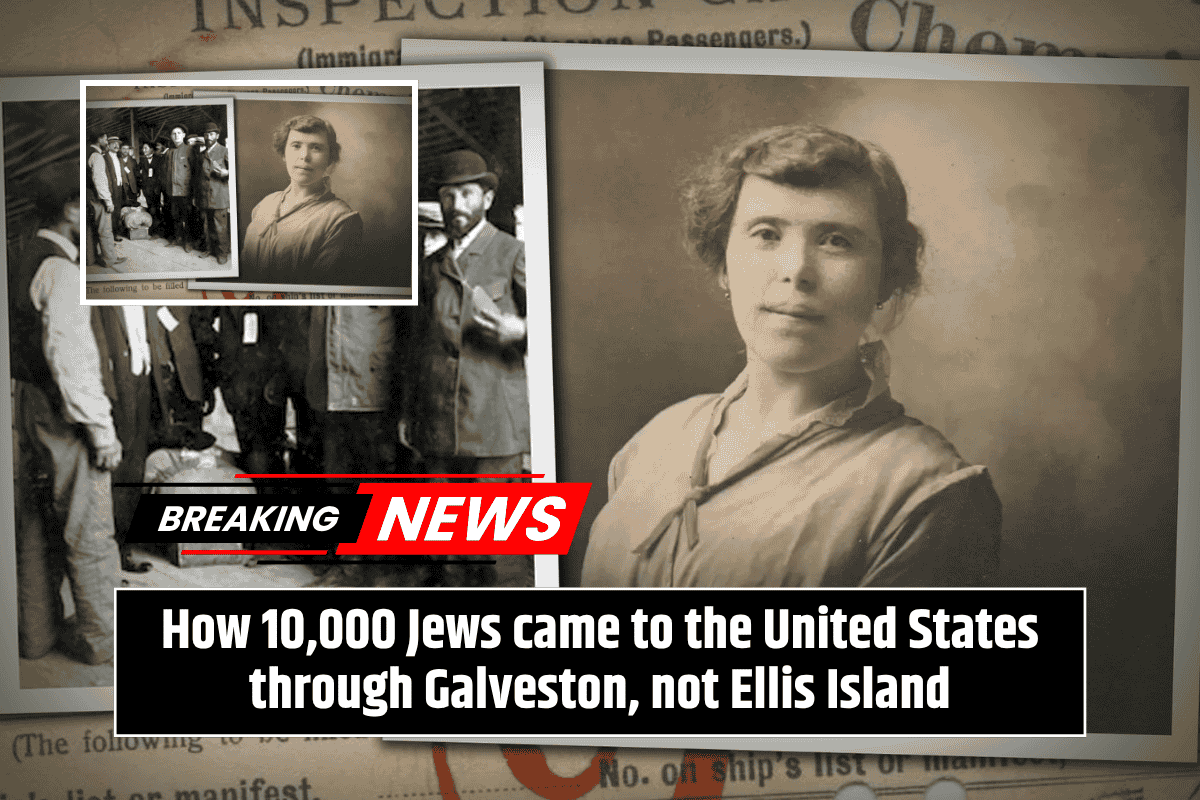The story of immigrants arriving in the United States through Ellis Island in New York is widely known. However, a lesser-known yet equally important chapter of immigrant history lies in Galveston, Texas. Between 1907 and 1914, approximately 10,000 Russian Jews fleeing violence in Eastern Europe and Russia arrived in Galveston.
This migration was part of an effort called the Galveston Movement, which aimed to settle these immigrants in the United States and provide them with new opportunities.
What Was the Galveston Movement?
The Galveston Movement was spearheaded by Jewish assistance organizations that wanted to help Jewish refugees escape the growing violence in Eastern Europe, especially in the years leading up to World War I. Unlike the well-known immigration route through New York’s Ellis Island, the Galveston Movement focused on bringing Jewish immigrants to Texas.
The movement was not only a chance for these immigrants to flee danger, but it also allowed them to build a new life in America.
David Jochelmann, one of the co-founders of the Galveston Movement, played a central role in this initiative. His efforts helped shape the lives of thousands of Jewish immigrants. David Jochelmann was also the great-grandfather of writer Rachel Cockerell, who has written a book titled Melting Point: Family, Memory, and the Search for a Promised Land, documenting her family’s experience with the Galveston Movement.
Why Galveston?
Galveston was chosen as the landing point for these Jewish immigrants for several reasons. One key factor was the devastating 1900 hurricane that had destroyed parts of the city. In the wake of this disaster, Galveston’s leaders sought to revitalize the port and its economy. The idea of bringing in a large number of immigrants seemed like an effective solution to help repopulate and rebuild the city.
Rachel Cockerell, in an interview with Houston Matters producer Michael Hagerty, explains how the hurricane played a significant role in shaping the decision to make Galveston the focal point of Jewish immigration. After the disaster, the city needed new settlers to help with its reconstruction, and Jewish assistance organizations saw it as an opportunity to settle immigrants far from the crowded ports of New York.
Life After Arrival
Once the Jewish immigrants arrived in Galveston, they didn’t just stay in the city. Many of them spread out across Texas and other parts of the United States. They began to blend with the local community, adapting to their new environment while maintaining their cultural identity.
Rachel Cockerell humorously notes that a “Russian-Texan” accent became a unique feature of the community, showing how the Jewish immigrants integrated into the local culture while keeping their traditions alive.
The Galveston Movement also provided a sense of community and support for the immigrants. They were able to rely on Jewish organizations to help them settle, find work, and become part of the broader American society. It was a journey of survival and adaptation, and for many, it marked the beginning of a new chapter in their lives.
How This Story Changed Rachel Cockerell’s Perspective
For Rachel Cockerell, the story of the Galveston Movement has had a deep personal impact. Learning about her great-grandfather’s role in this important movement has changed how she sees her family and their history. In her book, Melting Point, she explores how the experiences of the immigrants who came to Galveston influenced her own family’s story.
Cockerell reflects on the sacrifices made by her ancestors and how their resilience and courage shaped the family’s identity. The Galveston Movement is not just a historical event; for Cockerell, it’s a journey of family, memory, and the search for a promised land.
The story of Jewish immigrants arriving in Galveston through the Galveston Movement is a fascinating and lesser-known part of American immigration history. It highlights the determination of individuals and families to find a better life, despite facing great adversity. The movement helped shape not only the lives of those who arrived but also the city of Galveston itself.
Rachel Cockerell’s book, Melting Point, provides a personal and historical account of this movement, shedding light on the enduring legacy of her great-grandfather’s work. The Galveston Movement remains an important chapter in the story of Jewish immigration to the United States, illustrating how communities can rebuild, adapt, and thrive.
